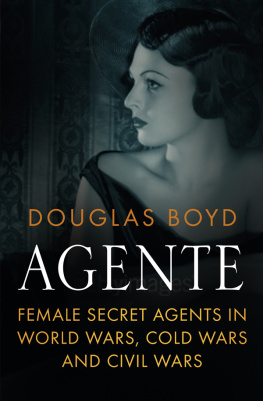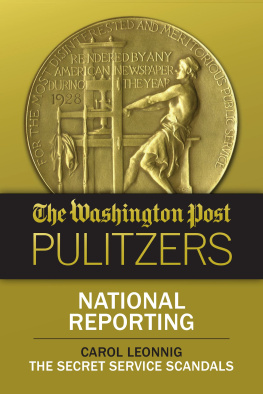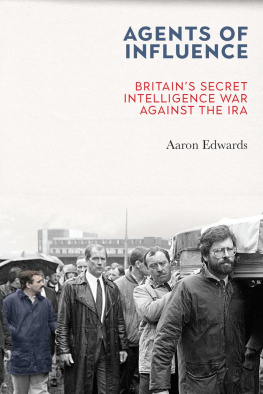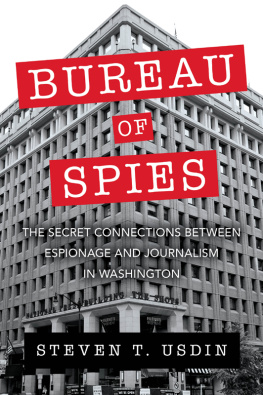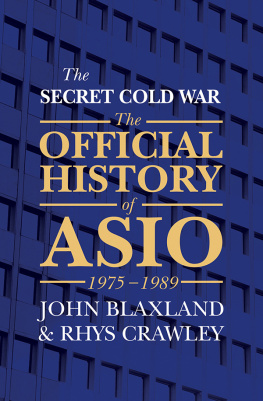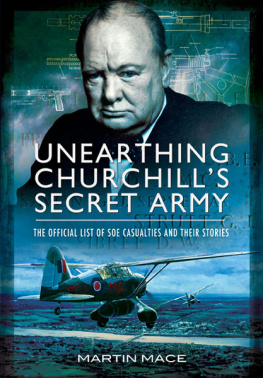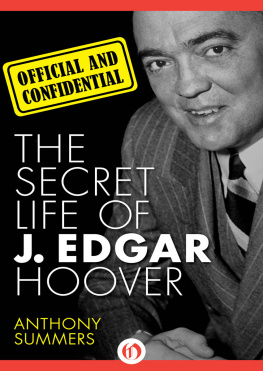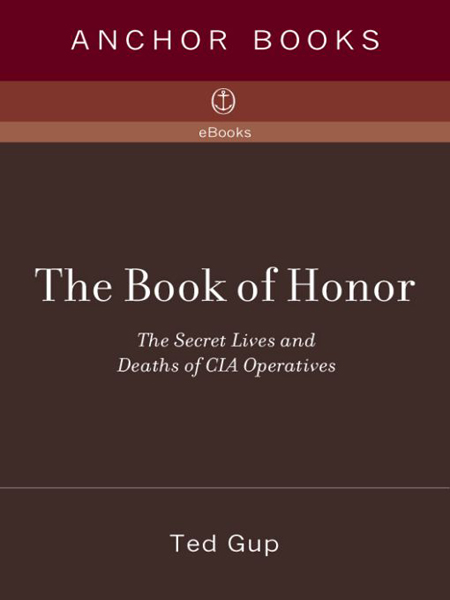
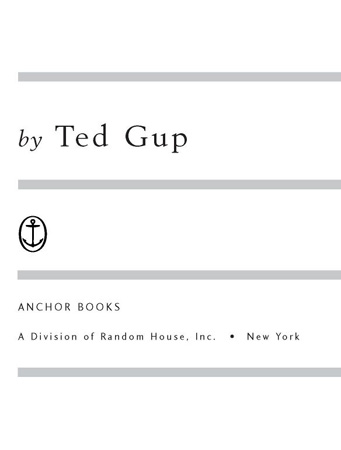
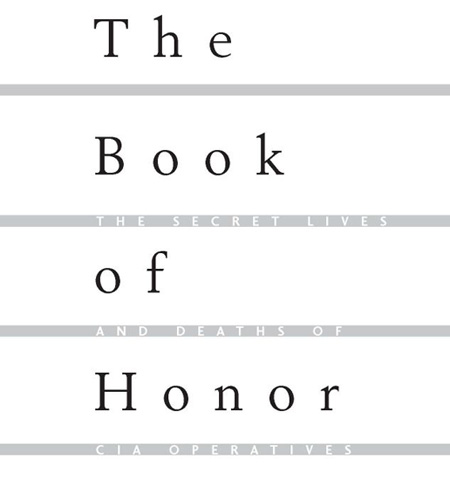
Table of Contents
To the sons and daughters of the CIAs stars,
named and unnamed alike,
and in memory of my father,
who told me the only thing a man may hope to leave behind
is his good name.
Acclaim for Ted Gups
The Book of Honor
[Gup] puts a human face on the CIAs checkered and often tragic history.... Is it possible for a book to have it both ways? Is it possible to criticize an agency for its conduct, its values and ethics, its very view of the world, and at the same time admire and sympathize profoundly with its agents? That seems to be what Ted Gup has accomplished in this very fine and compassionate book. Pittsburgh Tribune-Review
Ted Gup found out what the Central Intelligence Agency didnt want him to know, and now hes going to tell you. The Plain Dealer
Told against the backdrop of Cold War and superpower struggles, Gups sleuthing is a remarkable coup, full of high-level intrigue, cover-ups and drama. Publishers Weekly
This is not a pretty story. Real espionage never is. What ace reporter Ted Gup found when he researched the CIA wasnt suave James Bonds but lively, complex, and heroic Americans lost in a web of agency coverups... [an] astonishing expos. American Way
Who controls the past controls the future,
who controls the present controls the past.
GEORGE ORWELL
Secrecy, once accepted, becomes an addiction.
EDWARD TELLER, PHYSICIST
Prologue
I REMEMBER the first time I stood before the Central Intelligence Agencys Wall of Honor. It was during the Gulf War, February 1991. As a reporter for Time magazine, I had come to interview an Agency analyst, a specialist on Iraq. The interview was to be on deep background. I was not to reveal the analysts name or link him to the CIA.
I arrived a few minutes early. The guards at the entrance to the vast 258-acre compound in Langley, Virginia, had been expecting me. They keyed in my Social Security number, issued me a plastic badge, and pointed me in the direction of the headquarters building. Stern-faced guards, a hedge of steel spikes in the roadway, and a landscape bristling with half-concealed monitors encouraged me to stay on course.
I remember entering the Stalinesque headquarters building, some 1.4 million square feet of marble and pillars and row upon row of recessed lights. The lobby was cavernous and cool, almost sepulchral. I had written about the CIA before, but this was my first visit to its headquarters. Set into the floor of the lobby was a huge medallion of the Agency seal featuring a vigilant eagle and a compass rose whose radiating spokes represented the CIAs worldwide reach.
Inscribed overhead, on the south wall, were words from Scripture, John 8:32: And ye shall know the truth, and the truth shall make you free. There was no hint of irony about it, though daily, covert officers trained in deception pass through the lobby, their identities a construct of lies intended to produce some greater truth.
It was the north wall, though, that caught my eye. There, rising before me, was a field of black stars chiseled into white Vermont marble. To the left was the flag of the nation, to the right, the flag of the Agency. I drew nearer. Above the stars were engraved these words: IN HONOR OF THOSE MEMBERS OF THE CENTRAL INTELLIGENCE AGENCY WHO GAVE THEIR LIVES IN THE SERVICE OF THE COUNTRY.
There were five rows of stars. One by one I counted them. Sixty-nine in all. Below the field of stars was a stainless-steel and glass case. It was locked. Inside was a book.
The Book of Honor, it was called, a tome as sacred to the Agency as if it held a splinter of the true cross. It was a thin volume of rough-cut pages, opened to the center, a black braid, tasseled at the end, tucked into the valley between the open pages. In neat black letters were written the years that each CIA officer died. Beside the year, in some twenty-nine cases, were inscribed the names of the fallen. I recognized two: Richard Welch, gunned down in front of his house in Athens in 1975, and William F. Buckley, the Beirut station chief tortured to death in 1985. His remains were found in a plastic sack beside the road to the airport.
But beside most of the years, there were no names, just stars. Forty nameless stars, tiny as asterisks, each representing a covert officer killed on a CIA mission.
These nameless stars spanned half a century. There was nothing to provide even a hint as to their identitiesno month or day of death, no country or continent where they fell, and not a word to suggest the nature of their mission. All was veiled in secrecy.
I stood transfixed as scores of CIA employees swept past me on their way to or from the security desk, oblivious to the quiet memorial. In the minutes before my Agency escort arrived to take me to my interview, I took out a notebook and scribbled down the names and dates and stars in the Book of Honor. Who were these stars? I wondered. How and where had they died? What missions claimed their lives?
The first nameless star had died in 1950. What secret could be so sensitive that after five decades his or her identity still could not be revealed? I wondered, too, about the families these covert officers left behind, whether they were free to speak of the loss of a loved one or whether they were forced to grieve in silence. Were they told the truth of what had happened to their husbands or wives, sons or daughters? Did these stars, named and unnamed alike, represent unsung heroes, or were they, perhaps, saboteurs and assassins ensnared in their own schemes? And what, if anything, had the American people been told of these casualties? Had the U.S. government, perhaps the president himself, lied about their fates?
I had seen many such memorials before. The FBI, DEA, State Department, and even Amtrak have memorial walls to those who died in service. But all of these identify their fallen and celebrate their sacrifices. The CIAs is different, a memorial to men and women who are faceless. How, I wondered, could a memorial purport to remember those who are unknown to all but a few? And what sort of person would be willing to make the ultimate sacrificethe loss not only of life but of identity as well?
It was that notion of anonymity even in death that moved me. When I had finished jotting down the dates and names and stars, I tore the pages out of my spiral notebook and tucked them into the pocket of my jacket.
I suspected even then that this wall, this Book of Honor, and these nameless stars would stay with me, that I would revisit them again and again until I had unraveled their secrets. But I also knew that scores of Washington reporters, all who covered the intelligence beat, had walked past this same memorial and had similar ambitions. The Book of Honor was one of Washingtons most abiding mysteries. There was a reason the secret of the stars remained intact.
A moment later a hand gently tapped me on my shoulder. It was my escort, ready to take me through the security turnstile, and to my interview. As we walked down the corridor, I asked him about the nameless stars. He seemed amused and deftly fended off my question. He had had this conversation before. In my asking, I had revealed that I was a new-comer to the beat.
Next page

